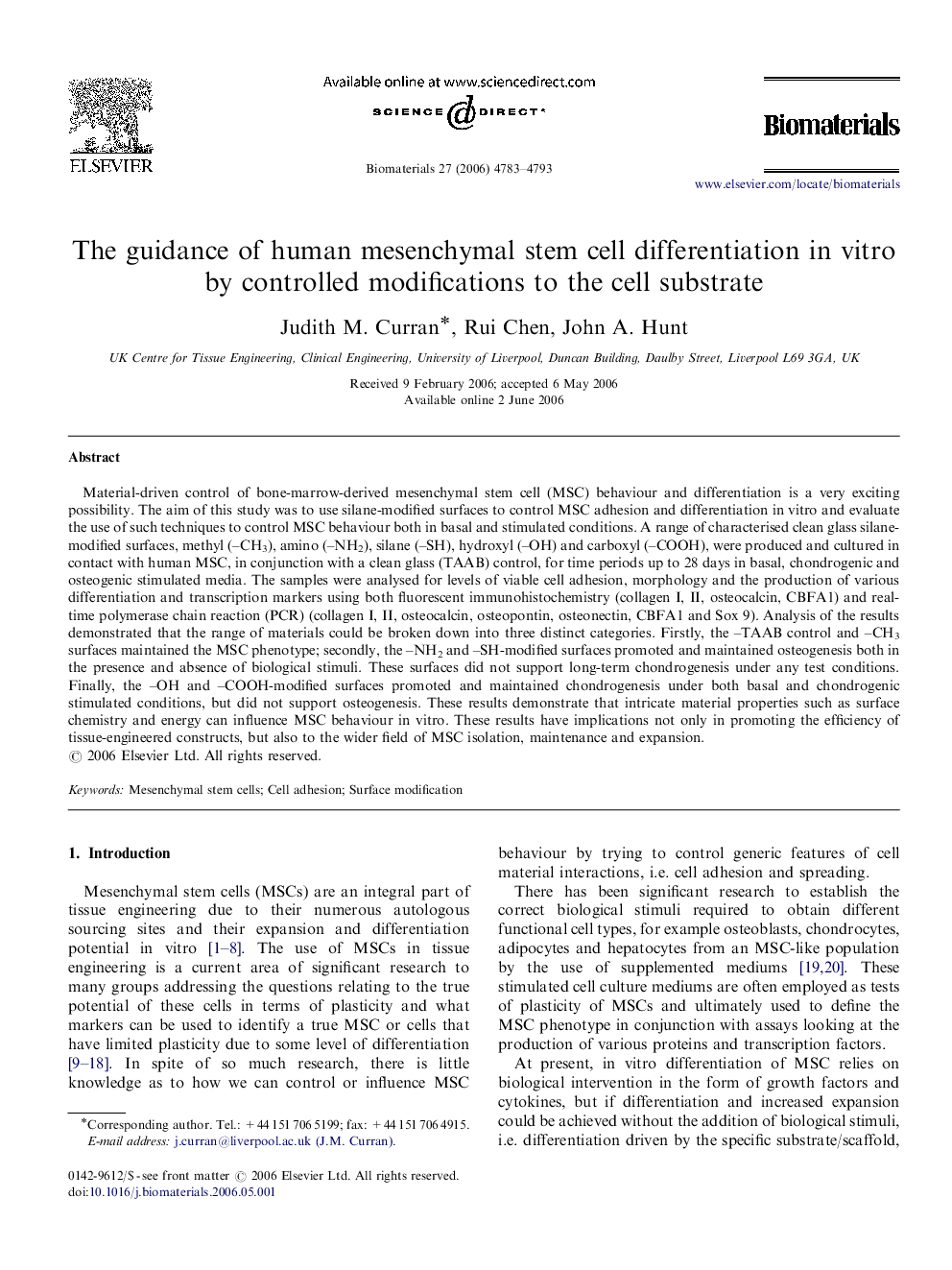| Article ID | Journal | Published Year | Pages | File Type |
|---|---|---|---|---|
| 11320 | Biomaterials | 2006 | 11 Pages |
Material-driven control of bone-marrow-derived mesenchymal stem cell (MSC) behaviour and differentiation is a very exciting possibility. The aim of this study was to use silane-modified surfaces to control MSC adhesion and differentiation in vitro and evaluate the use of such techniques to control MSC behaviour both in basal and stimulated conditions. A range of characterised clean glass silane-modified surfaces, methyl (–CH3), amino (–NH2), silane (–SH), hydroxyl (–OH) and carboxyl (–COOH), were produced and cultured in contact with human MSC, in conjunction with a clean glass (TAAB) control, for time periods up to 28 days in basal, chondrogenic and osteogenic stimulated media. The samples were analysed for levels of viable cell adhesion, morphology and the production of various differentiation and transcription markers using both fluorescent immunohistochemistry (collagen I, II, osteocalcin, CBFA1) and real-time polymerase chain reaction (PCR) (collagen I, II, osteocalcin, osteopontin, osteonectin, CBFA1 and Sox 9). Analysis of the results demonstrated that the range of materials could be broken down into three distinct categories. Firstly, the –TAAB control and –CH3 surfaces maintained the MSC phenotype; secondly, the –NH2 and –SH-modified surfaces promoted and maintained osteogenesis both in the presence and absence of biological stimuli. These surfaces did not support long-term chondrogenesis under any test conditions. Finally, the –OH and –COOH-modified surfaces promoted and maintained chondrogenesis under both basal and chondrogenic stimulated conditions, but did not support osteogenesis. These results demonstrate that intricate material properties such as surface chemistry and energy can influence MSC behaviour in vitro. These results have implications not only in promoting the efficiency of tissue-engineered constructs, but also to the wider field of MSC isolation, maintenance and expansion.
